Commonwealth Graves in Sai Wan War Cemetery, Hong Kong.
Many thanks to Jim Diggins who sent me these photos. He is an Air Canada pilot and took these photos in early 2015. He says in part: " . . . . The grave of Lt. Col. J.L.R. Sutcliffe has special meaning for me. He was the commanding officer of the Winnipeg Grenadiers who died as a Japanese POW. His son, Dick Sutcliffe, was a pilot in WW II and later became an airline Captain with CP Air -- I flew with him many times as his Second Officer. He died last year in Kelowna. The other grave of Pvt. A. Brown stood out for its inscription -- I have a 24 year old son. As is the case with all CWGC Cemeteries, Sai Wan is very well tended, in a quiet setting, despite being in the middle of a very busy Hong Kong neighbourhood. "
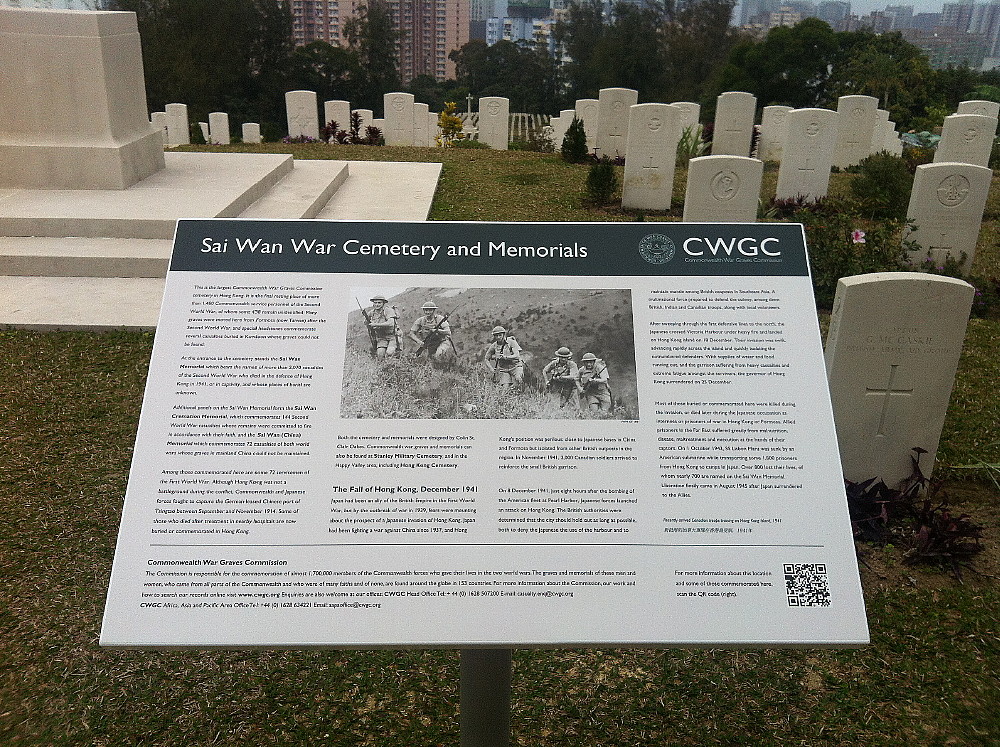
CLICK HERE TO SEE AN ENLARGEMENT OF THE ABOVE PHOTO.
The inscription on the memorial plaque reads as follows:
" This is the largest Commonwealth War Graves Commission cemetery in Hong Kong. It is the final resting place of more than 1,480 Commonwealth service personnel of the Second World War, of whom some 438 remain unidentified. Many graves were moved here from Formosa (now Taiwan) after the Second World War, and special headstones commemorate several casualties buried in Kowloon whose graves cound not be found.
" At the entrance to the cemetery stands the San Wan Memorial which bears the names of more than 2,070 casualties of the Second World War who died in the defence of Hong Kong in 1941, or in captivity, and whose places of burial are unknown.
" Additional panels on the Sai Wan Memorial form the Sai Wan Cremation Memorial, which commemorates 144 Second World War casualties whose remains were committed to fire in accordance with their faith, and the Sai Wan (China) Memorial which commemorates 72 casualties of both world wars whose graves in mainland China could not be maintained.
" Among those commemorated here are some 72 servicemen of the First World War. Although Hong Kong was not a battleground during the conflict, Commonwealth and Japanese forces fought to capture the German-leased Chinese port of Tsingtao between September and November 1914. Some of those who died after treatment in nearby hospitals are now buried or commemorated in Hong Kong.
" The Fall of Hong Kong, December 1941: Japan had been an ally of the British Empire in the First World War, but by the outbreak of war in 1939, fears were mounting about the prospect of a Japanese invasion of Hong Kong. Japan had been fighting a war against China since 1937, and Hong Kong's position was perilous: close to Japanese bases in China and Formosa but isolated from other British outposts in the region. In November 1941, 2,000 Canadian soldiers arrived to reinforce the small British garrison.
" On 8 December, 1941, just eight hours after the bombing of the American fleet at Pearl Harbor, Japanese forces launched an attack on Hong Kong. The British authorities were determined that the city should hold out as long as possible, both to deny the Japanese the use of the harbour and to maintain morale among British outposts in Southeast Asia. A multinational force prepared to defend the colony, among them British, Indian and Canadian troops, along with local volunteers.
" After sweeping through the first defensive lines to the north, the Japanese crossed Victoria Harbor under heavy fire and landed on Hong Kong island on 18 December. Their invasion was swift, advancing rapidly across the island and quickly isolating the outnumbered defenders. With supplies of water and food running out, the garrison suffering from heavy casualties and extreme fatigue amongst the survivors, the governor of Hong Kong surrendered on 25 December.
" Most of those buried or commemorated here were killed during the invasion, or died later during the Japanese occupation as internees or prisoners of war in Hong Kong or Formosa. Allied prisoners in the Far East suffered greatly from malnutrition, disease, maltreatment and execution at the hands of their captors. On 1 October 1942, SS Lisbon Maru was sunk by an American submarine while transporting some 1,800 prisoners from Hong Kong to camps in Japan. Over 800 lost their lives, of whom nearly 700 are named on the Sai Wan Memorial. Liberation finally came in August 1945 after Japan surrendered to the Allies.
" Both the cemetery and memorials were designed by Colin St. Clair Oakes. Commonwealth war graves and memorials can also be found at Stanley Military Cemetery and in the Happy Valley area, including Hong Kong Cemetery. "
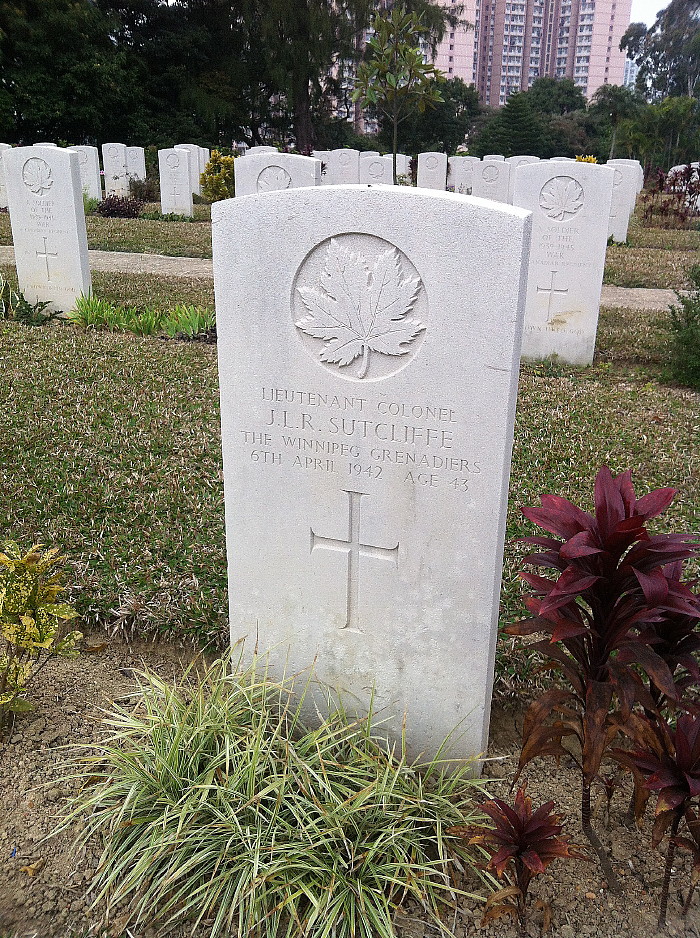
Canadian graves in Sai Wan cemetery.
In front is the grave of Lieutenant Colonel J.L.R. Sutcliffe of the
Winnipeg Grenadiers.
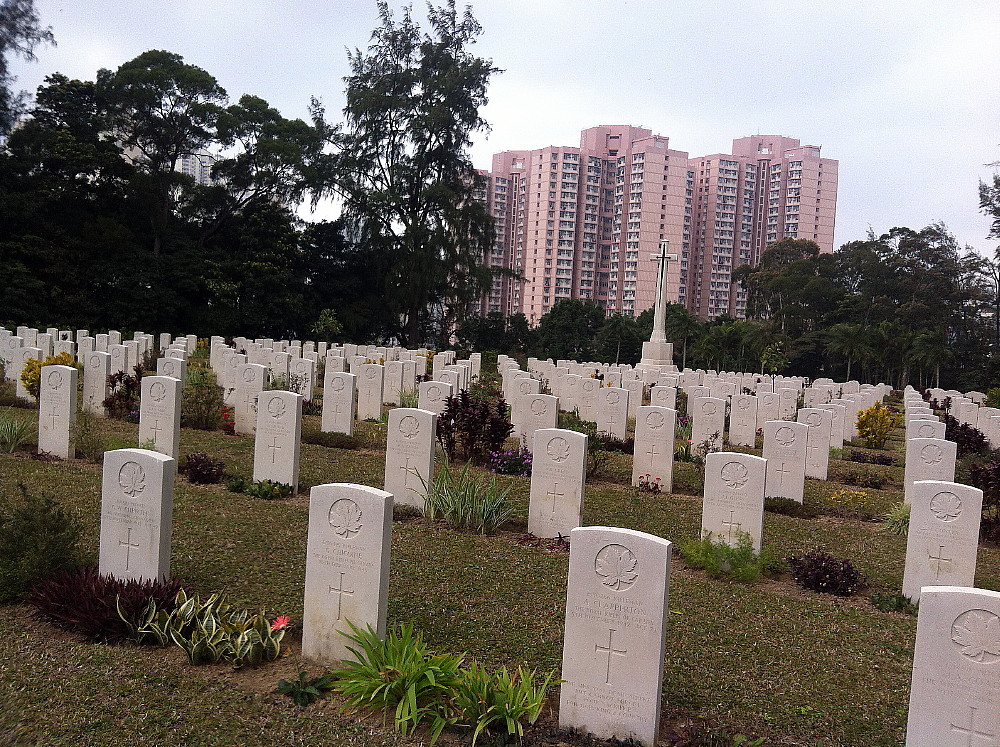
Canadian graves in Sai Wan cemetery.
Names readable are G.W. Chewter, G. Chicoine, A. Clapperton, M. Gunter,
J.J. Gunn, A.R. Greer or Green.
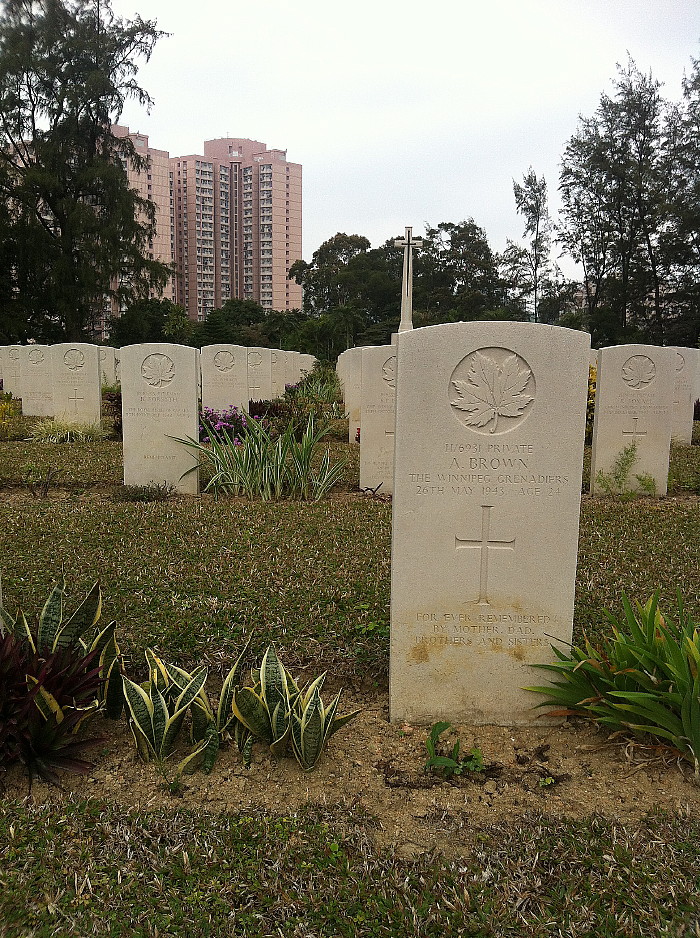
Canadian graves in Sai Wan cemetery.
Names readable are A. Brown, R. Foxall, both of the Winnipeg Grenadiers, and R. Forsythe of the Royal Rifles.
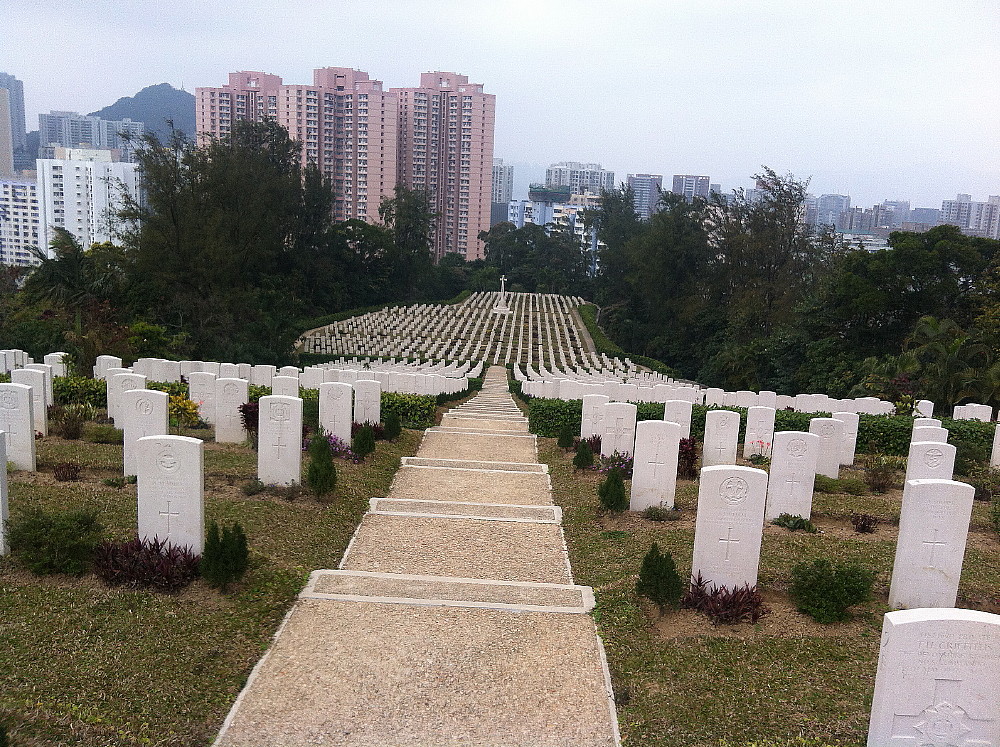
A long view of the graves in Sai Wan cemetery.
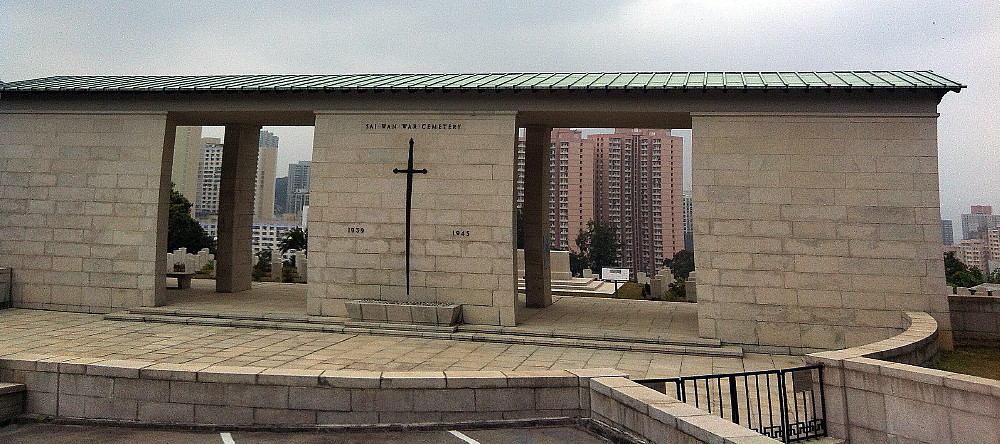
Entrance to Sai Wan cemetery.
Can you provide details or corrections?
Please email Charlie Dobie.